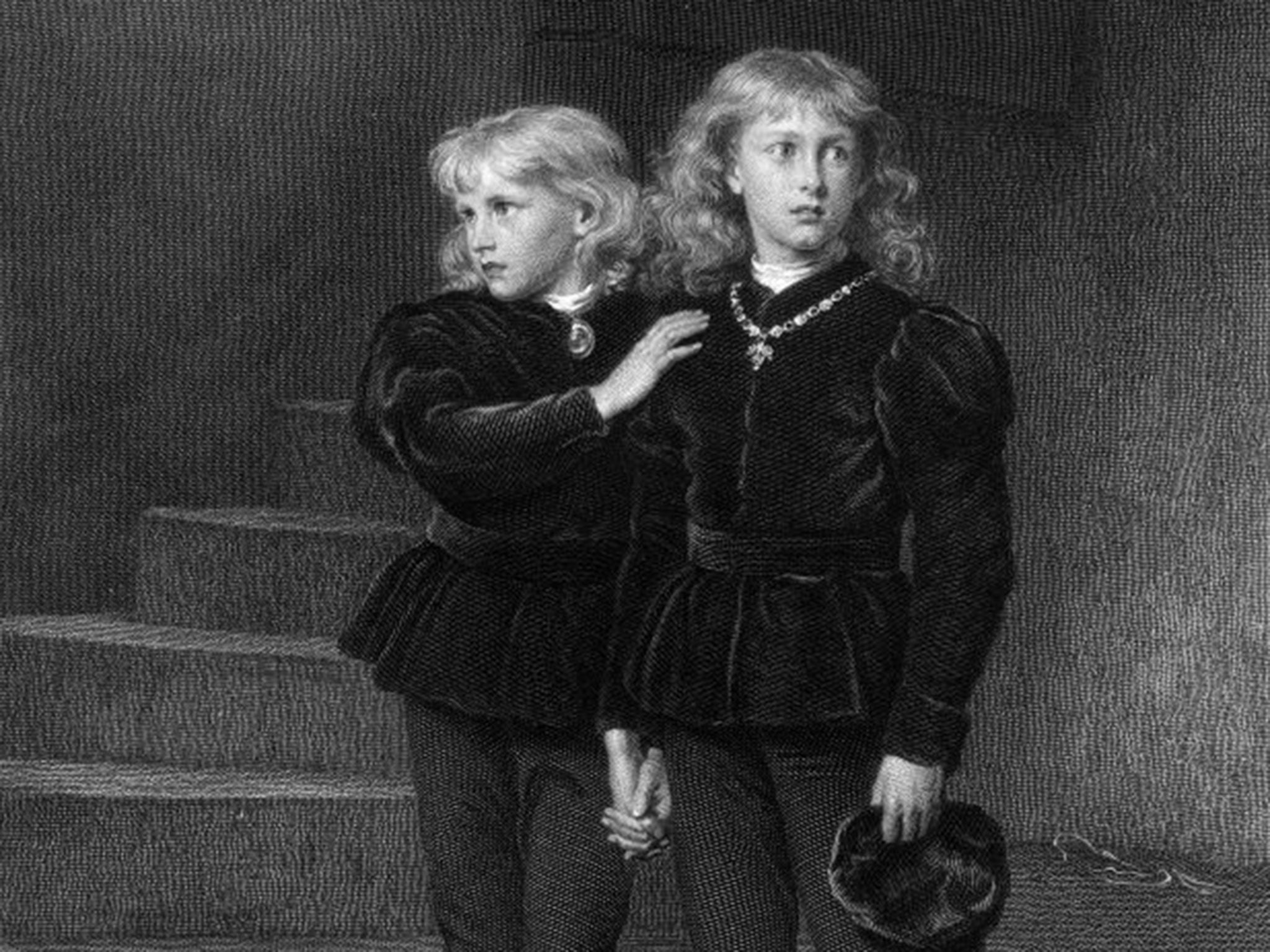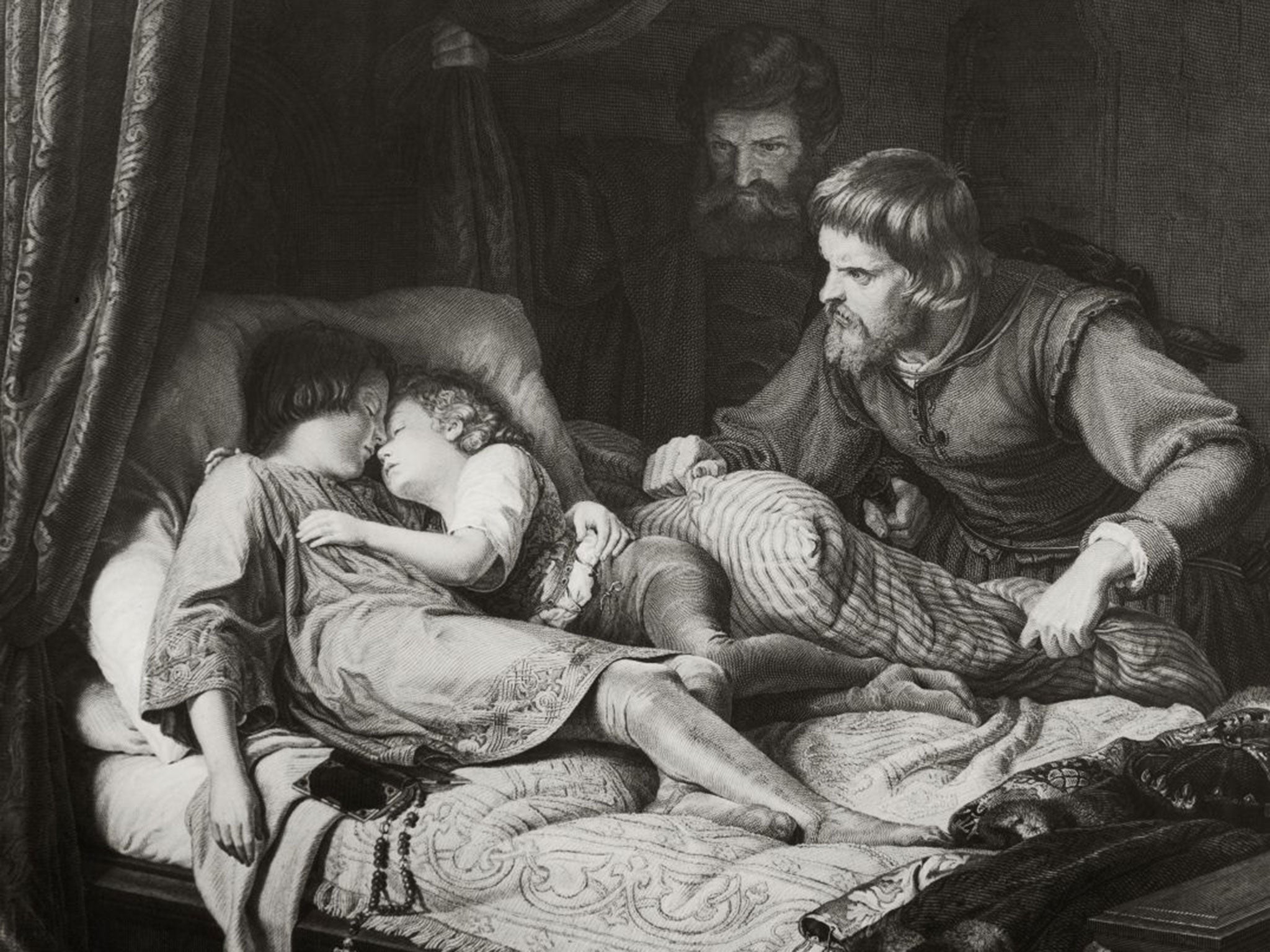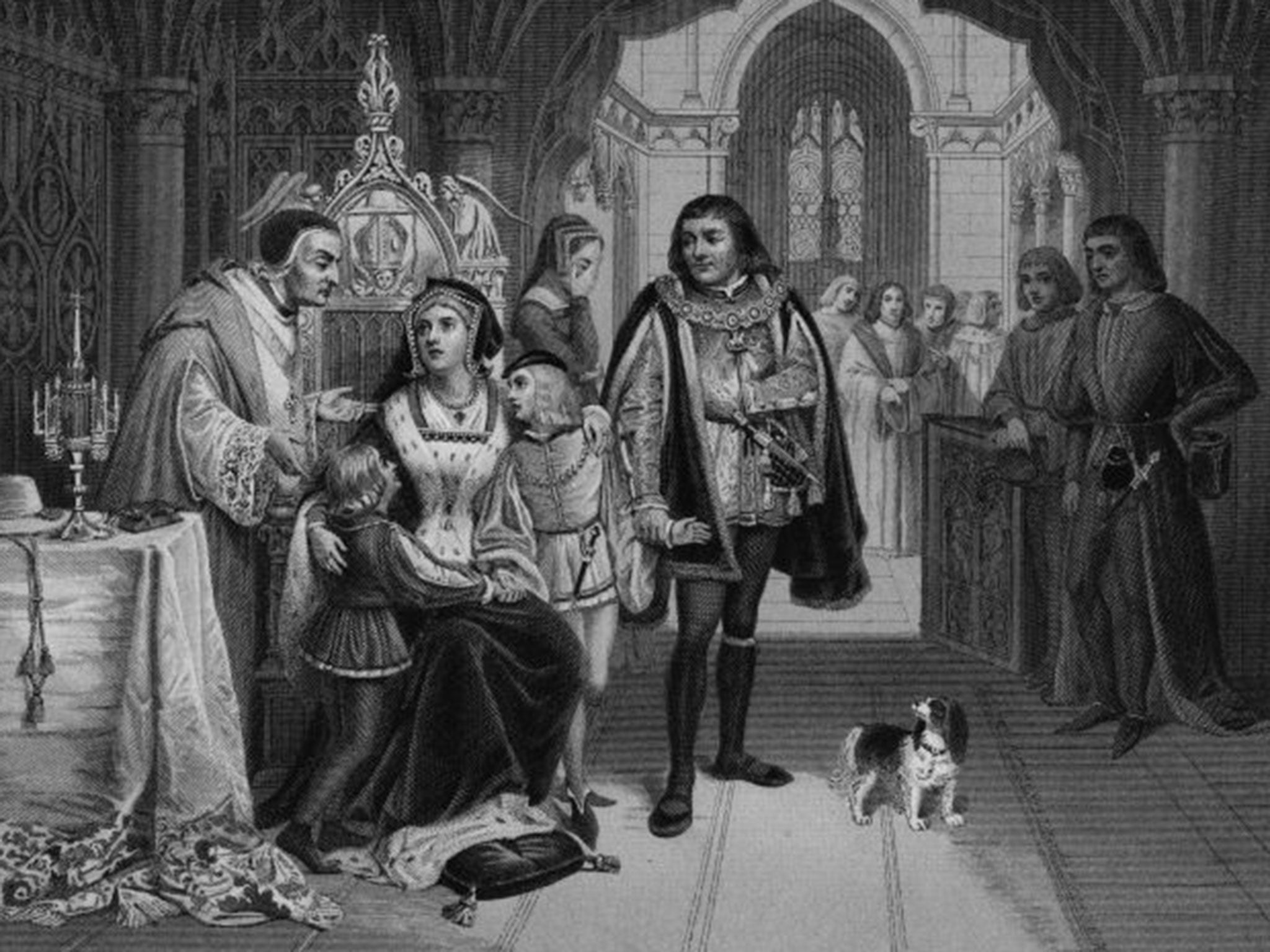The Princes in the Tower: Will the ultimate cold case finally be solved after more than 500 years?
Exclusive: Historian who discovered grave of Richard III embarks on new quest

Your support helps us to tell the story
From reproductive rights to climate change to Big Tech, The Independent is on the ground when the story is developing. Whether it's investigating the financials of Elon Musk's pro-Trump PAC or producing our latest documentary, 'The A Word', which shines a light on the American women fighting for reproductive rights, we know how important it is to parse out the facts from the messaging.
At such a critical moment in US history, we need reporters on the ground. Your donation allows us to keep sending journalists to speak to both sides of the story.
The Independent is trusted by Americans across the entire political spectrum. And unlike many other quality news outlets, we choose not to lock Americans out of our reporting and analysis with paywalls. We believe quality journalism should be available to everyone, paid for by those who can afford it.
Your support makes all the difference.It is perhaps the greatest of all cold cases: who was responsible for the death of the two Princes in the Tower. But historians who believe their disappearance will forever remain a mystery should think again.
Philippa Langley, the historian and screenwriter who spearheaded the Looking for Richard project that resulted in one of the greatest historical discoveries of modern times – the grave of Richard III located beneath a car park in Leicester – is back once more, attempting to crack the case, The Independent can reveal.
It is widely assumed the Plantagenet King Richard III killed his nephews in the summer of 1483 after their father, Edward IV, died.
Twelve-year-old Edward V, expecting his coronation, was taken to the Tower of London along with his nine-year-old brother Richard of Shrewsbury, Duke of York. But the accession never occurred.
The death of the two boys remains one of the greatest mysteries in British history.

Ms Langley will announce details of the new quest today during celebrations marking the 530th anniversary of the Battle of Bosworth, the last significant battle of the War of the Roses in which Richard III was killed.
“I have three key lines of investigation – two that have never been investigated before,” she said. “There are a couple of European lines of inquiry that are looking very interesting. We do know that [Richard III’s successor] Henry Tudor tried to destroy all copies of Richard’s legal right to the throne, the Titulus Regius. What we don’t know is how much of the other paperwork he destroyed quietly behind the scenes. So, we’re hoping that further [destruction] might not have taken place on the Continent. There might be more information available over there.”
Some British families with private archives dating to the Plantagenet and Tudor periods are also coming forward to open their doors to Ms Langley and her research team.
“We now have this incredible network of specialists around the world who are willing, ready and able to start new research into the princes. They just need to be told when, where and how and they’re ready to get on with it.

“This is a pure research project and it’s exciting in that we can go into it with a focus on this particular mystery.”
Ms Langley said she will be teaming up with professional cold case investigators, some of whom work with the police on unsolved murders.
“When you keep the paper historians out of it and ask those whose job it is to look into cold case histories, like the police, lawyers and private investigators they all say the same thing: that’s it’s very questionable whether there was a murder at all, considering what happened with all the pretenders that arrived under Henry Tudor’s reign; and second, that Richard III is not their prime suspect – because they go on motive, opportunity and proclivity.
“I’ll be using cold case history specialists because this project needs to go in places it has never gone before.”
The team will be putting together a research document in the coming weeks before the investigation officially begins. Ms Langley hopes to team up again with the Richard III Society, which has also begun a major new research project into scoliosis – the abnormal curvature of the spine of which Richard III suffered a severe form.
One area where no researcher will be allowed to investigate is the Henry VII Lady Chapel in Westminster Abbey – where the bones said to belong to the princes were interred by Charles II four years after the discovery in 1674 of two children’s skeletons. The remains were found by workmen 10ft under the staircase leading to the chapel of the White Tower.
The Church of England, supported by the Queen, has repeatedly refused requests to exhume the remains so that forensic tests can be carried out.

Ms Langley will be joined on stage at the anniversary weekend by the bestselling novelist and historian Philippa Gregory discussing why the Plantagenet and Tudor periods retain such a fascination for the public.
Ms Langley said: “Philippa is fascinated by the princes as well. You can imagine how much rsearch she has carried out for her novels and from all of that she believes Perkin Warbeck [arguable the most famous of the pretenders that emerged during Henry VII’s reign] who claimed to be Richard, Duke of York, was in fact the younger prince.”
During this weekend’s Bosworth celebrations Ms Langley will also give the first public reading of the poem by poet laureate Carol Ann Duffy and read by Benedict Cumberbatch, a distant relation of Richard III, at the King’s re-internment in March. It was subsequently dedicated to Ms Langley for all her work during the Looking for Richard project.
She said: “I was thrilled by that and it’s a huge honour to mark the first public reading since Benedict’s wonderful reading at Leicester Cathedral. It’s going to be pretty special – especially for me.”
Ms Langley said she is determined to once again right a historical wrong.
“The Looking for Richard project told us very clearly that all of the writers and historians on Richard III, about from two or three, they all believed the story that his bones had been thrown in the River Soar.
“They believed it because it fitted with the archetypal villain, the archetypal Tudor history and Shakespearean history. Because we questioned that and proved it was indeed a complete myth that I think this question of what happened to the princes really needs looking into now.”
The suspects
Richard III
The prime suspect, escorted Edward V to the Tower of London where he was last seen.
Motive – insecure hold on the monarchy due to the way he obtained the crown, faced rebellions from the Yorkists loyal to Edward IV prior to Parliament conforming his title to the throne in January 1484.
Evidence – circumstantial. Ms Langley argues that it would have better served Richard III to display the dead bodies in public to prevent pretenders to the throne coming forward.
Henry VII (Henry Tudor)
Richard III’s rival who defeated his forces at the Battle of Bosworth.
Motive – executed rival claimants to the throne following his coronation.
Evidence – Henry Tudor was out of the country at the time of the princes’ disappearance and so could only have murdered them post-accession. Historians have called the theory the only plausible alternative to Richard III’s being the killer.
Henry Stafford
2nd Duke of Buckingham, kingmaker and breaker: played a major role in the rise and fall of Richard III.
Motive – held a claim to the throne through the House of Beaufort family.
Evidence – a manuscript found in the early 1980s in the College of Arms collection states that the princes were murdered “be [by] the vise” of the Duke of Buckingham. There is some argument over whether “vise” means “advice” or “devise”.
Sir James Tyrell
English knight, loyal servant to Richard III.
Motive – following the orders of his king.
Evidence – said to have confessed under torture to the murder of the princes before his execution for treason in 1502, according to Sir Thomas More’s The History of King Richard III. The original document containing his confession was never produced. Shakespeare portrayed Tyrell as the murderer in his play Richard III.
Join our commenting forum
Join thought-provoking conversations, follow other Independent readers and see their replies
Comments